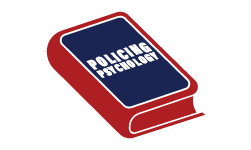Law enforcement worker suicide: An updated national assessment
Why this journal article is important:
This paper examines the rate of death by suicide based on occupation for over 4.4 million study participants using the National Occupational Mortality Surveillance database (NOMS, Centers for Disease Control and Prevention). It concluded that “law enforcement personnel are 54% more likely to die of suicide than all decedents with a usual occupation.” Law enforcement personnel experience a high stress work environment which includes, “life-threatening situations, traumatic events, witnessing violence and assaults, child abuse and other similar events” which might impact their suicide rate.
Racial and gender sub-category comparisons:
This study compared the rates of suicides for law enforcement in comparison to others of the same race and gender, who had a different profession. The study found that White males “are 33% more likely to die of suicide than expected” in comparison to White males who aren’t cops. Another example included that, “White female officers in each of the three law enforcement categories were also more likely to die of suicide than White women in all occupation.” African-American males were “almost two times more likely to commit suicide” than African-American males who were not police officers.
Prevention considerations:
The article says that, “it is important to consider potential strategies for preventing police suicide.” The authors recommend, “encourage help-seeking, decreasing stigma and educating employers about suicide.” There is a list of 5 recommendations, which may be applied to police work:
- “Strengthening access and delivery of suicide care.”
- “Organizational policies and culture: Likely the biggest problem in police suicide prevention is the hesitancy of officers to seek professional mental health help due to the strong influence of police culture.”
- “Reduce access to lethal means among persons at risk of suicide.” Departments need to emphasize the temporary nature of separating someone from their firearm during at-risk periods.
- “Peer support programs… Police officers are at first more trusting with police peer support persons for help rather than mental health professionals.” This might help improve the need to increase help seeking-behaviour.
- “Suicide training: Suicide awareness and prevention should be included as part of any police training curriculum.”
- “Postvention:” Police officers and organizations are at risk of suicide contagion and clusters. As such, “leadership relying on an informal, unwritten policy is not a prudent approach given the potentially harmful after effects of a suicide in this close-knit occupation.”
Mental health stigma:
“One of the persistent problems in police suicide prevention is the hesitancy of officers to seek professional mental health help.” Police culture has historically been high in mental health stigma and officers still talk about a mental health stigma in policing. The authors wrote “stigma is one of the most frequently identified barriers to mental healthcare and is prevalent among first responders such as the police.” Police officers also need “more education for police concerning mental health and effective treatment.”
Alcohol:
Alcohol has been one of the main coping mechanisms for police officers for decades. Long-term alcohol abuse is detrimental for your mental health, and several prominent psychologists have linked long-term alcohol abuse and increased suicide completions. “Studies of alcohol use and suicidal ideation have found problematic alcohol use to be a correlate of suicidal ideation.” For example, one study found that, “increased alcohol use was associated with 4.45 times greater odds of suicide ideation among police.”
Peer support:
The central theme of peer support within policing is the assumption that “police peers are more trusted by officers in distress.” This can be one important aspect to reducing the stigma of getting help as, “peer supporters draw on their shared experiences in order to provide empathic understanding, information and advice.”
International Association of Chiefs of Police (IACP) suicide prevention initiative:
The IACP has created a national strategy for suicide prevention, which is based on the following four aspects:
- Culture change;
- Early warning and prevention protocols;
- Training;
- Event response protocols.
Summary:
It is clear from this study that police officers have been experiencing higher rates of suicide, which is consistent with several previous authors. This article suggests considering numerous important aspects of police suicides, including mental health stigma, the impact of alcohol, the protective factor of peer support and reducing access to lethal means during high-risk periods. The article also refers to the IACP strategy for prevention, which includes culture change, early warning, training and suicide response protocols. It is crucial that we listen to the experts. We need to be proactive to continue reducing future police suicides.

